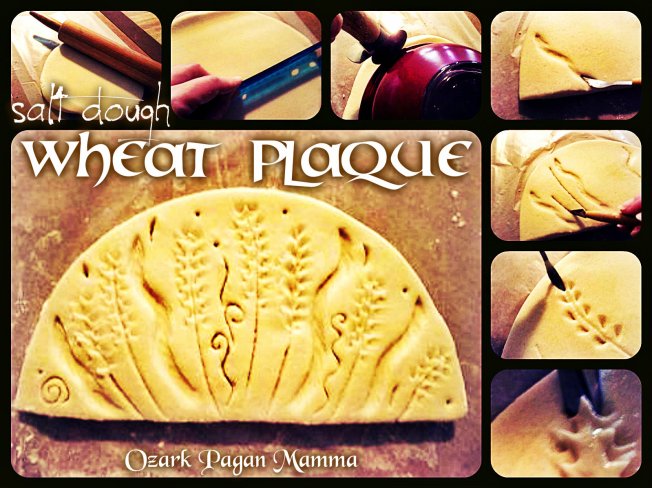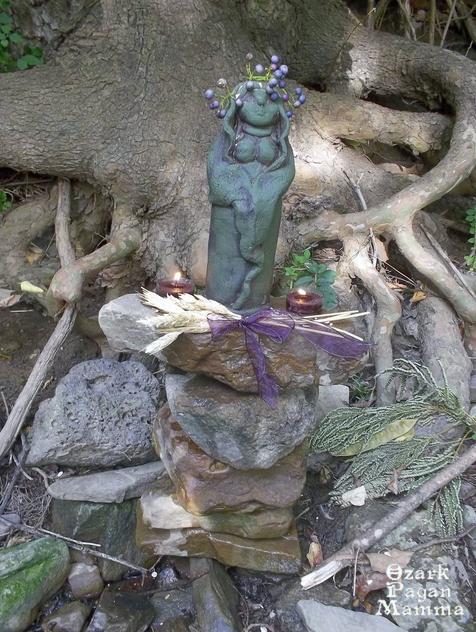Historically, grain dollies were made from the last sheaf harvested, and either left in the field or placed wherever grains were stored. It was often tied or plaited to be roughly human shaped, but in some places shaped like an animal. It was representative of the Spirit of the Harvest, or the Corn Mother. In Ireland, the grain harvest is associated with Lúnasa. But the god Lúgh is not a grain god or earth god. He’s not John Barleycorn (who is English, and more about the production of beer). Lúgh isn’t a sun god either, but I’ll get to that later.
The grain dolly from the previous harvest would be ploughed into the first furrow of the new season in the spring, or else otherwise destroyed in some way to release the spirit of the previous year’s grain. Another tradition, the one that most Pagans follow (and I don’t know the origin), states that it is to be kept to insure a bountiful crop through the next harvest season and burned around the time that a new one is made from the last sheaf.
Since Neopagans have three harvest holidays (Lúnasa, Autumn Equinox, and Samhain) in the widely observed “wheel of the year”, there is some debate over which holiday to burn a grain dolly. I would think the answer would be to make it close to one’s local grain harvest date. Arkansas grows soft red winter wheat as a commercial crop. Harvest begins in May and ends as late as the first week of July. So, for our locality, if you want to burn your grain dolly at the end of harvest, it makes sense to do so at Lúnasa, rather than at any of the later harvest holidays. That, and because it’s the harvest holiday that has a strong grain theme.
Note that I’m calling them grain dollies instead of the more traditional “corn dolly”. This is because Americans have confused traditional use of the word corn to exclusively mean maize. To the Europeans, corn meant grain. Corn dollies were not corn husk dolls. They didn’t have maize back then. Corn dollies were made of whatever grain various European cultures predominantly ate, like wheat or oats.
But we do live in the modern western world, and many would say that we need to adapt traditions to where we are and the way we live now. Americans in general do eat a lot of corn, both as a vegetable and as a grain, and as a sweetener (although Arkansas doesn’t grow much maize commercially). Corn husk dolls are easier to make than wheat dolls, which is probably a big part of why most American Pagans make corn husk dolls instead of the more traditional grain dollies for harvest holidays. The materials are also easier to find. Not many people grow wheat in their backyard garden but plenty grow corn, or could get corn in the husk at any farmer’s market or grocery store. Maize harvest starts mid August in Arkansas and can last late into September or even October, so it would make sense to burn your cornhusk harvest dolls at the Autumnal Equinox or Samhain if you are so inclined.
Unless you are a farmer or a gardener who grows grains, your harvest doll is purely symbolic anyway, not made from the last sheaf of anything, but symbolic of the harvest for you personally. So make it of whatever materials represent the harvest for you (you’ll notice that one of the dollies in the picture below is made of both cornhusks and wheat), and burn or bury it at whichever of the harvest (or spring) holidays that you feel drawn to do so.



